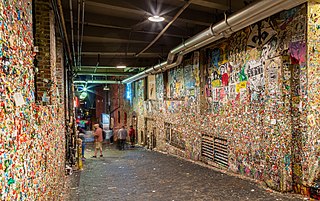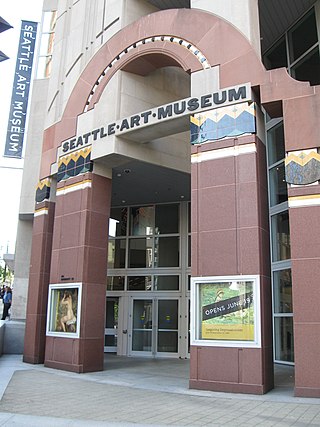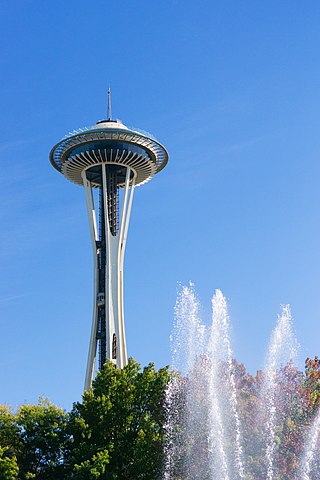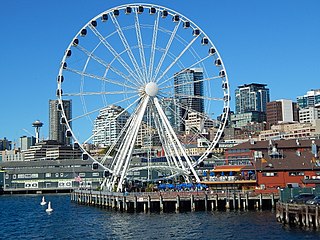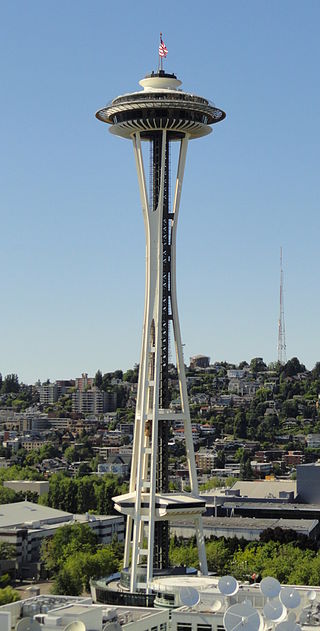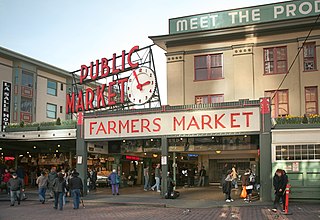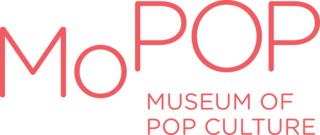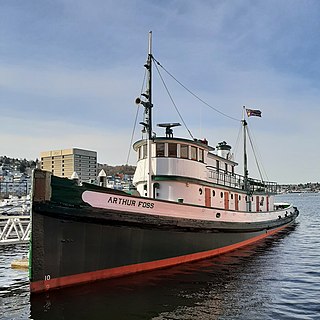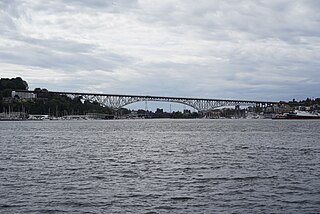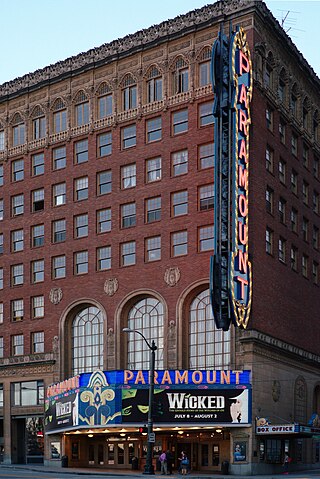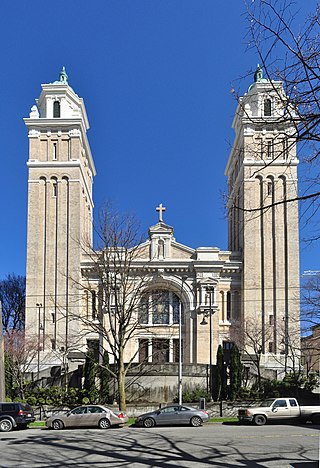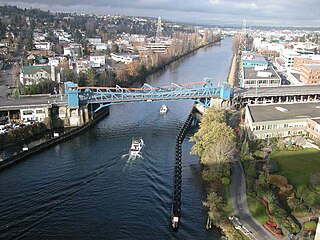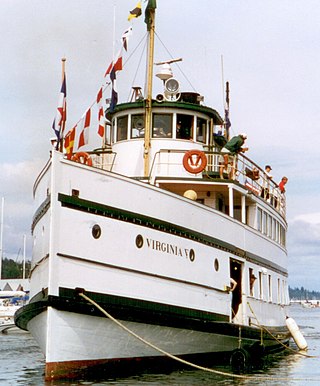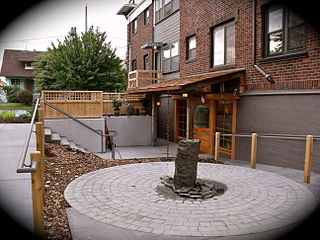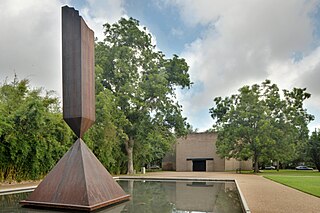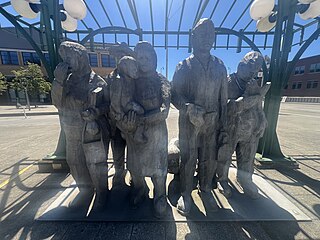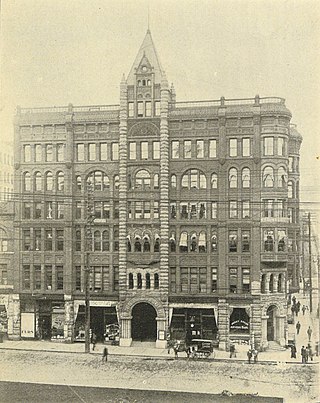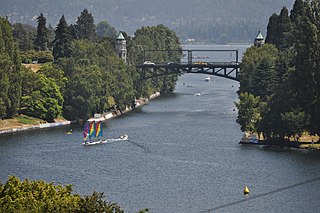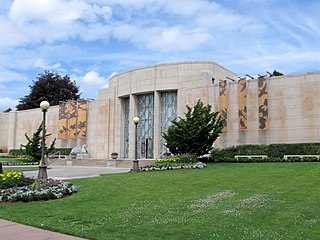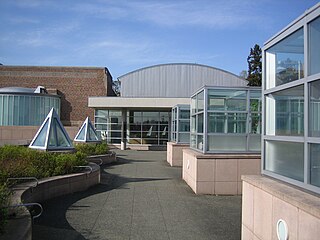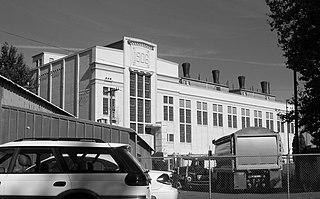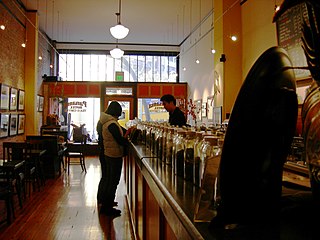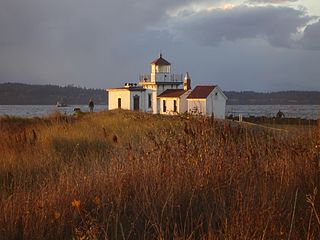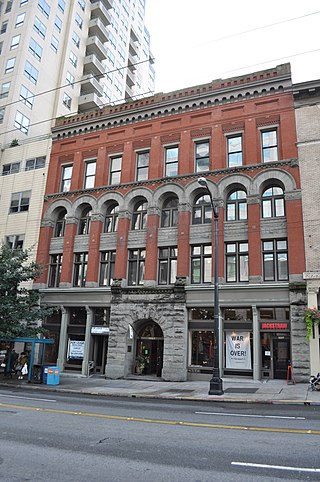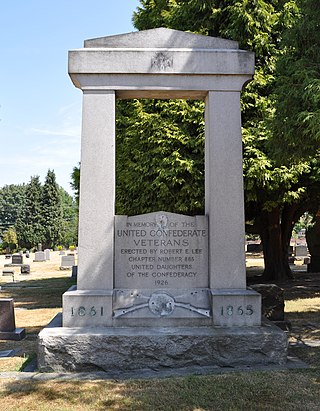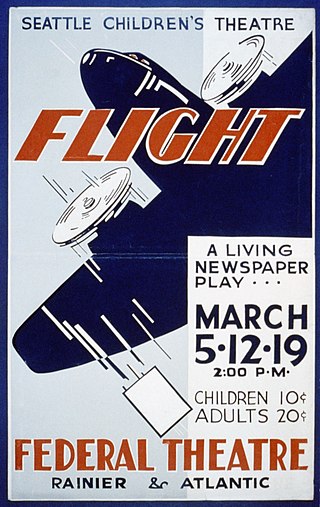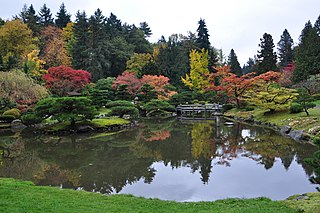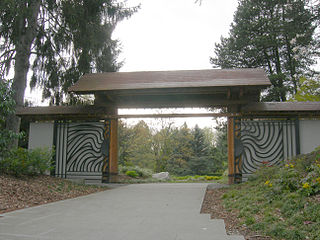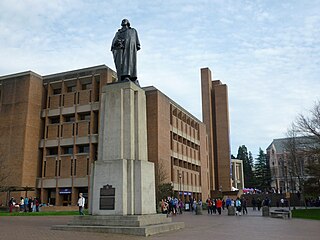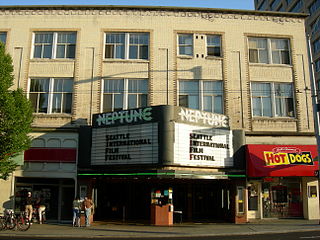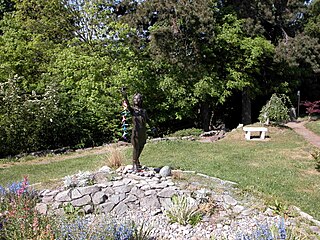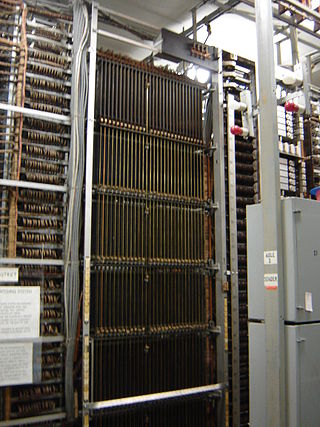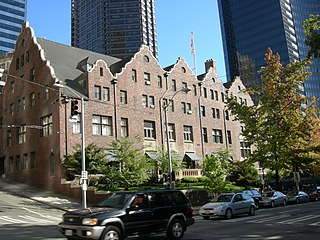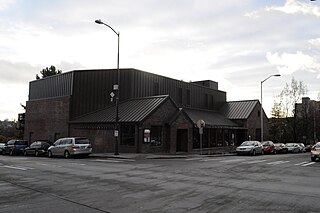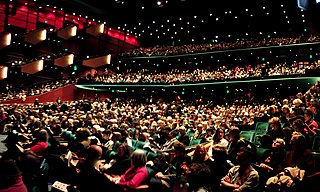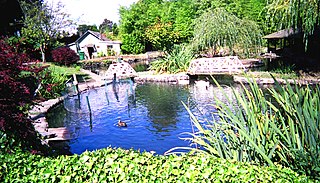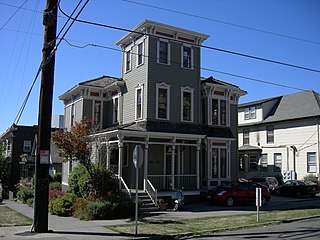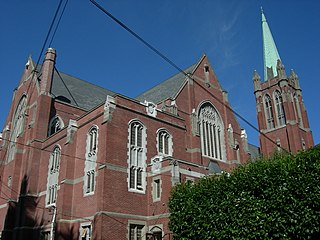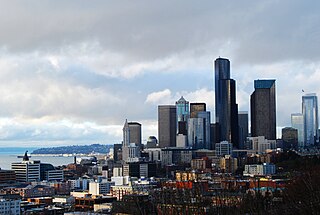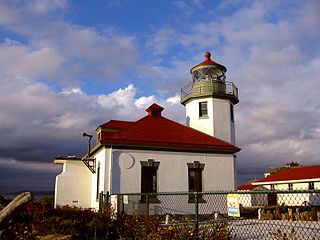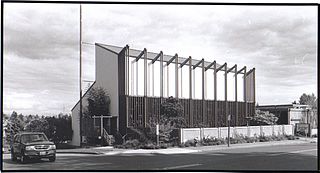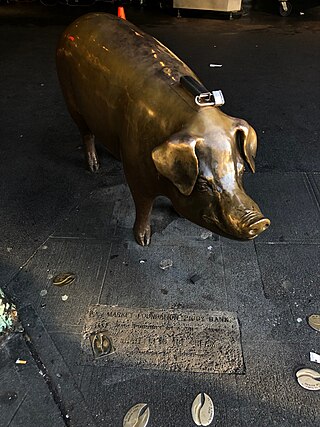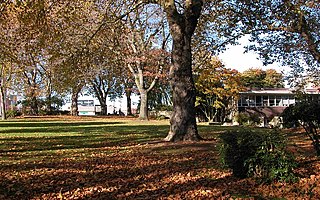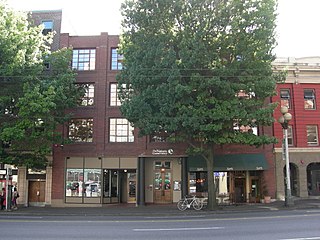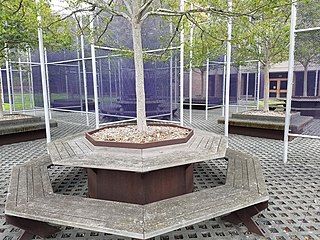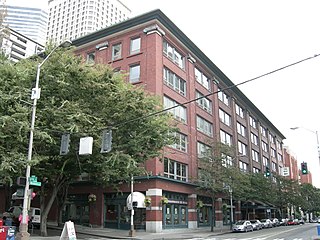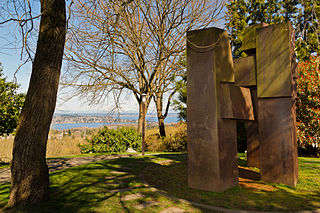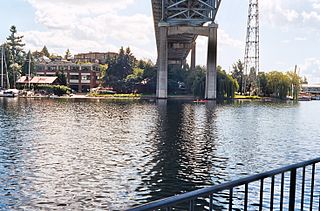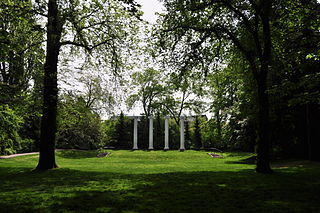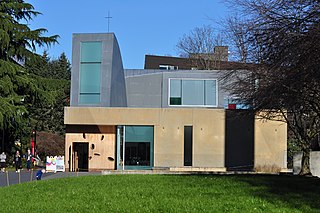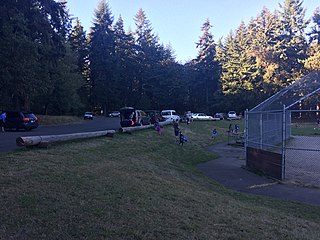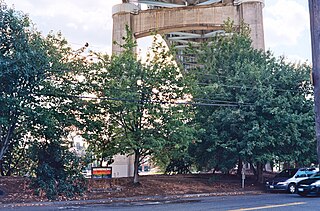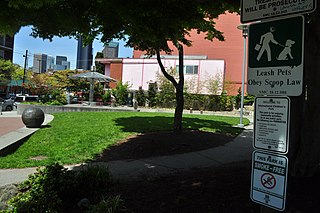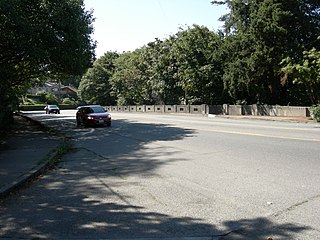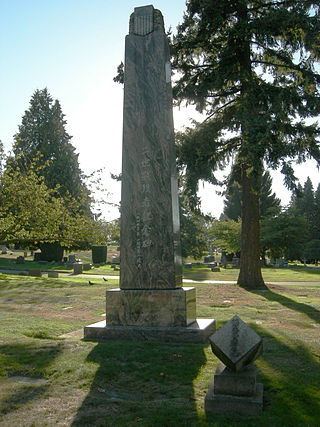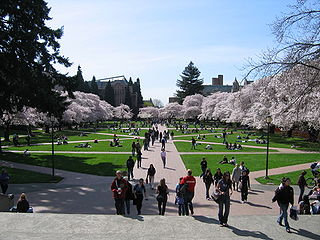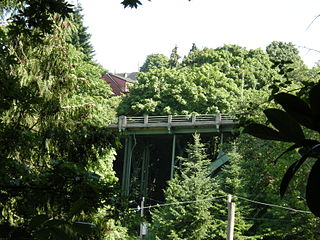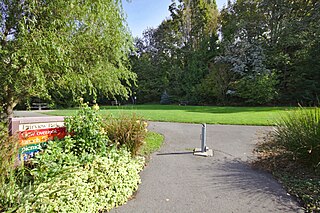76 Sights in Seattle, United States (with Map and Images)
Legend
Welcome to your journey through the most beautiful sights in Seattle, United States! Whether you want to discover the city's historical treasures or experience its modern highlights, you'll find everything your heart desires here. Be inspired by our selection and plan your unforgettable adventure in Seattle. Dive into the diversity of this fascinating city and discover everything it has to offer.
Sightseeing Tours in SeattleActivities in SeattleThe Gum Wall is a brick wall situated beneath Pike Place Market in Downtown Seattle, Washington (State), United States. Located on Post Alley near Pike Street, south of the market's main entrance off 1st Avenue, the wall is covered with used chewing gum. Certain sections of the gum accumulation on the walls measure several inches in thickness, reaching a height of 15 feet along a 50-foot-long segment. Originating inadvertently in the 1990s, the Market Theater Gum Wall has evolved into a notable tourist attraction and local landmark.
The Seattle Art Museum is an art museum located in Seattle, Washington, United States. The museum operates three major facilities: its main museum in downtown Seattle; the Seattle Asian Art Museum in Volunteer Park, Capitol Hill; and Olympic Sculpture Park on the central Seattle waterfront, which opened in 2007.
The Seattle Center is an entertainment, education, tourism and performing arts center located in the Lower Queen Anne neighborhood of Seattle, Washington, United States. Constructed for the 1962 World's Fair, the Seattle Center's landmark feature is the 605 ft (184 m) Space Needle, an official city landmark and globally recognized symbol of Seattle's skyline. Other notable attractions include the Pacific Science Center, Climate Pledge Arena, and the Museum of Pop Culture (MoPOP), as well as McCaw Hall, which hosts both the Seattle Opera and Pacific Northwest Ballet. The Seattle Center Monorail provides regular public transit service between the Seattle Center and Westlake Center in Downtown Seattle, and is itself considered a tourist attraction.

Woodland Park Zoo is a wildlife conservation organization and zoological garden located in the Phinney Ridge neighborhood of Seattle, Washington, United States. The zoo is the recipient of over 65 awards across multiple categories. The zoo has around 900 animals from 250 species and the zoo has over 1 million visitors a year.
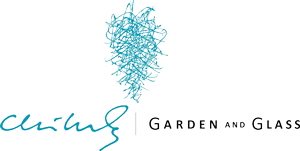
Chihuly Garden and Glass is an exhibit in the Seattle Center directly next to the Space Needle, showcasing the studio glass of Dale Chihuly. It opened in May 2012 at the former site of the defunct Fun Forest amusement park.
The Seattle Great Wheel is a 53-meter tall giant Ferris wheel at Pier 57 on Elliott Bay in Seattle, Washington, United States. At an overall height of 175 feet (53.3 m), it was the tallest Ferris wheel on the West Coast of the United States when it opened in June 2012.
7. Space Needle
The Space Needle is an observation tower in Seattle, Washington, United States. Considered to be an icon of the city, it has been designated a Seattle landmark. Located in the Lower Queen Anne neighborhood, it was built in the Seattle Center for the 1962 World's Fair, which drew over 2.3 million visitors. It is also near KOMO Plaza, the Studios of KOMO-TV (ABC), and KUNS-TV.
8. Pike Place Market
Pike Place Market is a public market in Seattle, Washington, United States. It opened on August 17, 1907, and is one of the oldest continuously operated public farmers' markets in the United States. Overlooking the Elliott Bay waterfront on Puget Sound, it serves as a place of business for many small farmers, craftspeople and merchants. It is named for its central street, Pike Place, which runs northwest from Pike Street to Virginia Street on the western edge of Downtown Seattle. Pike Place Market is Seattle's most popular tourist destination and the 33rd most visited tourist attraction in the world, with more than 10 million annual visitors.
9. MoPOP: Museum of Pop Culture
The Museum of Pop Culture is a nonprofit museum in Seattle, Washington, United States, dedicated to contemporary popular culture. It was founded by Microsoft co-founder Paul Allen in 2000 as the Experience Music Project. Since then MoPOP has organized dozens of exhibits, 17 of which have toured across the U.S. and internationally.
10. Lenin
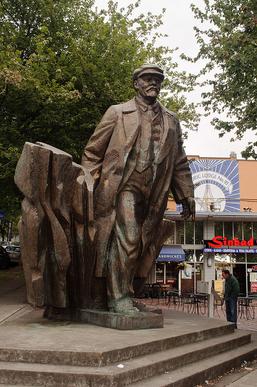
The Statue of Lenin is a 16 ft (5 m) bronze statue of Russian communist revolutionary Vladimir Lenin in the Fremont neighborhood of Seattle, Washington, United States. It was created by Bulgarian-born Slovak sculptor Emil Venkov and initially put on display in the Czechoslovak Socialist Republic in 1988, the year before the Velvet Revolution. After the revolutions of 1989 and dissolution of the Soviet Union, a wave of de-Leninization in Eastern Europe brought about the fall of many monuments in the former Soviet sphere. In 1993, the statue was bought by an American who had found it lying in a scrapyard. He brought it home with him to Washington State but died before he could carry out his plans to formally display it.
11. Seattle King Street

King Street Station is a train station in Seattle, Washington, United States. It is served by Amtrak's Cascades, Coast Starlight, and Empire Builder, as well as Sounder commuter trains run by Sound Transit. The station also anchors a major transit hub, which includes Link light rail at International District/Chinatown station and Seattle Streetcar service. It is located at the south end of Downtown Seattle in the Pioneer Square neighborhood, near the intersection of South Jackson Street and 4th Avenue South, and has four major entrances. It is the 15th-busiest station on the Amtrak system, serving as the hub for the Pacific Northwest region.
12. Arthur Foss
Arthur Foss, built in 1889 as Wallowa at Portland, Oregon, is likely the oldest wooden tugboat afloat in the world. Its 79-year commercial service life began with towing sailing ships over the Columbia River bar, and ended with hauling bundled log rafts on the Strait of Juan de Fuca in 1968. Northwest Seaport now preserves the tug as a museum ship in Seattle, Washington.
13. Aurora Avenue North
The Aurora Bridge is a cantilever and truss bridge in Seattle, Washington, United States. It carries State Route 99 over the west end of Seattle's Lake Union and connects Queen Anne and Fremont. The bridge is located just east of the Fremont Cut, which itself is spanned by the Fremont Bridge.
14. Pacific Science Center
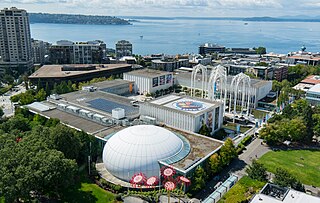
Pacific Science Center is an independent, nonprofit science center in Seattle with a mission to ignite curiosity and fuel a passion for discovery, experimentation, and critical thinking. Pacific Science Center serves more than 1 million people each year at its campus adjacent to Seattle Center, at the Mercer Slough Environmental Education Center in Bellevue, Washington, and in communities and classrooms across the state of Washington.
15. Paramount Theatre
The Paramount Theatre is a 2,807-seat performing arts venue located at 9th Avenue and Pine Street in the downtown core of Seattle, Washington, United States. The theater originally opened on March 1, 1928, as the Seattle Theatre, with 3,000 seats. It was placed on the National Register of Historic Places on October 9, 1974, and has also been designated a City of Seattle landmark.
16. Seattle Central Library
The Seattle Central Library is the flagship library of the Seattle Public Library system. The 11-story glass and steel building in the downtown core of Seattle, Washington was opened to the public on May 23, 2004. Rem Koolhaas and Joshua Prince-Ramus of OMA/LMN were the principal architects, and Magnusson Klemencic Associates was the structural engineer with Arup. Arup also provided mechanical, electrical, and plumbing engineering, as well as fire/life safety, security, IT and communications, and audio visual consulting. Hoffman Construction Company of Portland, Oregon, was the general contractor.
17. Large Lock
The Hiram M. Chittenden Locks, or Ballard Locks, is a complex of locks at the west end of Salmon Bay in Seattle, Washington's Lake Washington Ship Canal, between the neighborhoods of Ballard to the north and Magnolia to the south.
18. Burke Museum of Natural History and Culture
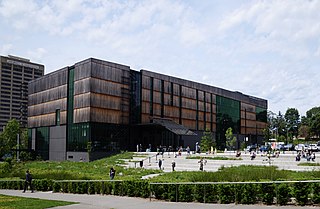
The Burke Museum of Natural History and Culture is a natural history museum on the campus of the University of Washington, in Seattle, Washington, United States. It is administered by the UW College of Arts and Sciences. Established in 1899 as the Washington State Museum, the museum traces its origins to a high school naturalist club formed in 1879. The museum is the oldest in Washington state and boasts a collection of more than 16 million artifacts, including the world's largest collection of spread bird wings. The Burke Museum is the official state museum of Washington.
Wikipedia: Burke Museum of Natural History and Culture (EN), Website
19. Saint James Cathedral
St. James Cathedral is a Catholic cathedral located at 804 Ninth Avenue in the First Hill neighborhood of Seattle, Washington, United States. It is the mother church of the Archdiocese of Seattle and the seat of its archbishop, currently Paul D. Etienne. The cathedral is named for St. James the Greater, patron saint of the archdiocese, and is the third church in the territory presently known as the Archdiocese of Seattle to bear the name.
20. Fremont Bridge
The Fremont Bridge is a double-leaf bascule bridge that spans the Fremont Cut in Seattle, Washington. The bridge, which connects Fremont Avenue North and 4th Avenue North, connects the neighborhoods of Fremont and Queen Anne.
21. Virginia V
The steamship Virginia V is the last operational example of a Puget Sound Mosquito Fleet steamer. She was once part of a large fleet of small passenger and freight carrying ships that linked the islands and ports of Puget Sound in Washington state in the late 19th and early 20th centuries. She is a Seattle landmark and a National Historic Landmark.
22. National Nordic Museum
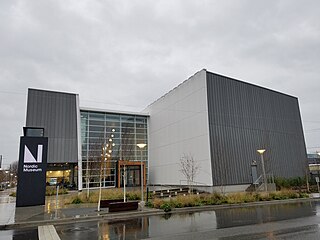
The National Nordic Museum is a museum in the Ballard neighborhood of Seattle, Washington, United States, dedicated to the Nordic history, art, culture, and the heritage of the area's Nordic immigrants. It was founded in 1980 as the Nordic Heritage Museum, moved into a permanent, purpose-built facility in 2018 named the Nordic Museum, and was designated as the National Nordic Museum in 2019. The museum serves as a community gathering place and shares Nordic culture by exhibiting art and objects, preserving collections, and providing educational and cultural experiences from Danish, Finnish, Icelandic, Norwegian and Swedish Americans. The geographical region covered by the Museum includes the entire Nordic region.
23. A Sound Garden
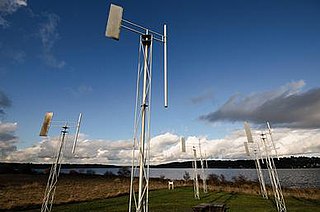
A Sound Garden is an outdoor public art work in Seattle, Washington, United States. It is one of six such works on the National Oceanic and Atmospheric Administration (NOAA) campus, which lies adjacent to Warren G. Magnuson Park on the northwestern shore of Lake Washington. Designed and built by sculptor Douglas Hollis from 1982 to 1983, the sound sculpture is composed of twelve 21-foot high steel tower structures, at the top of each of which hangs an organ pipe attached to a weather vane that produces soft-toned sounds when stirred by the wind.
24. Dai Bai Zan Cho Bo Zen Ji
Dai Bai Zan Cho Bo Zen Ji is a Rinzai-style Zen temple located on North Beacon Hill in Seattle, Washington. Its name translates from Japanese as "Listening to the Dharma Zen Temple on Great Plum Mountain."
25. Broken Obelisk
Broken Obelisk is a sculpture designed by Barnett Newman between 1963 and 1967. Fabricated from three tons of Cor-Ten steel, which acquires a rust-colored patina, it is the largest and best known of his six sculptures.
26. Waiting for the Interurban
Waiting for the Interurban, also known as People Waiting for the Interurban, is a 1978 cast aluminum sculpture collection in the Fremont neighborhood of Seattle. It is located on the southeast corner of N. 34th Street and Fremont Avenue N., just east of the northern end of the Fremont Bridge. It consists of six people and a dog waiting for public transportation — specifically, the Seattle-Everett Interurban. While the interurban railway ran through Fremont from 1910 until 1939, it stopped on Fremont Avenue rather than N. 34th Street, which the statue faces.
27. Pioneer Building
The Pioneer Building is a Richardsonian Romanesque stone, red brick, terra cotta, and cast iron building located on the northeast corner of First Avenue and James Street, in Seattle's Pioneer Square District. Completed in 1892, the Pioneer Building was designed by architect Elmer Fisher, who designed several of the historic district's new buildings following the Great Seattle Fire of 1889.
28. Montlake Boulevard East
The Montlake Bridge is a double-leaf bascule bridge that carries State Route 513 over Seattle's Montlake Cut—part of the Lake Washington Ship Canal—connecting Montlake and the University District.
29. Northwest Seaport
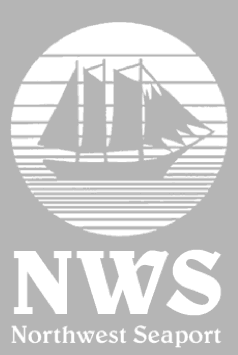
Northwest Seaport Maritime Heritage Center is a nonprofit organization in Seattle, Washington dedicated to the preservation and interpretation of Puget Sound and Northwest Coast maritime heritage, expressed through educational programs and experiences available to the public aboard its ships. The organization owns three large historic vessels docked at the Historic Ships' Wharf in Seattle's Lake Union Park; the tugboat Arthur Foss (1889), Lightship 83 Swiftsure (1904), and the halibut fishing schooner Tordenskjold (1911). These vessels are used as platforms for a variety of public programs, ranging from tours and festivals to restoration workshops and vocational training.
30. Seattle Asian Art Museum
The Seattle Asian Art Museum is a museum of Asian art at Volunteer Park in the Capitol Hill neighborhood of Seattle, Washington, United States. Part of the Seattle Art Museum, the SAAM exhibits historic and contemporary artworks from China, Korea, Japan, India, the Himalayas, and other Southeast Asian countries. It also features an education center, conservation center, and library. The museum is located in the 1933 Art Deco building which was originally home to the Seattle Art Museum's main collection. In 1991 the main collection moved to a newly constructed Seattle Art Museum building in the downtown area. The Seattle Asian Art Museum opened in 1994.
31. Henry Art Gallery
The Henry Art Gallery is a contemporary art museum located on the campus of the University of Washington, in Seattle, Washington, United States. Located on the west edge of the university's campus along 15th Avenue N.E. in the University District, it was founded in February, 1927, and was the first public art museum in the state of Washington. The original building was designed by Bebb and Gould. It was expanded in 1997 to 40,000 square feet (3,700 m2), at which time the 154-seat auditorium was added. The addition/expansion was designed by Gwathmey Siegel & Associates Architects.
32. Georgetown Steam Plant
The Georgetown Steam Plant, located in the Georgetown neighborhood of Seattle, Washington, was constructed in 1906 for the Seattle Electric Company to provide power for Seattle, notably for streetcars.
33. Panama Hotel
The Panama Hotel in Seattle, Washington's International District was built in 1910. The hotel was built by the first Japanese-American architect in Seattle, Sabro Ozasa, and contains the last remaining Japanese bathhouse (sento) in the United States.
34. West Point Light
The West Point Light, also known as the Discovery Park Lighthouse, is an active aid to navigation on Seattle, Washington's West Point, which juts into Puget Sound and marks the northern extent of Elliott Bay. The lighthouse is similar in design to the Point No Point Light and was added to the National Register of Historic Places in 1977. It is a main feature of Seattle's Discovery Park.
35. Grand Pacific Hotel plaque
The Grand Pacific Hotel is a historic building in Seattle, Washington, United States. It located at 1115-1117 1st Avenue between Spring and Seneca Streets in the city's central business district. The building was designed in July 1889 and constructed in 1890 [Often incorrectly cited as 1898] during the building boom that followed the Great Seattle Fire of 1889. Though designed as an office building, the Grand Central had served as a Single room occupancy hotel nearly since its construction, with the Ye Kenilworth Inn on the upper floors during the 1890s. The hotel was refurnished and reopened in 1900 as the Grand Pacific Hotel, most likely named after the hotel of the same name in Chicago that had just recently been rebuilt. It played a role during the Yukon Gold Rush as one of many hotels that served traveling miners and also housed the offices for the Seattle Woolen Mill, an important outfitter for the Klondike.
36. Benaroya Hall
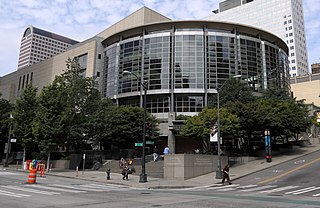
Benaroya Hall is the home of the Seattle Symphony in Downtown Seattle, Washington, United States. It features two auditoria, the S. Mark Taper Foundation Auditorium, a 2,500-seat performance venue, as well as the Illsley Ball Nordstrom Recital Hall, which seats 536. Opened in September 1998 at a cost of $120 million, Benaroya is noted for its technology-infused acoustics designed by Cyril Harris. Benaroya occupies an entire city block in the center of the city and has helped double the Seattle Symphony's budget and number of performances. The lobby of the hall features a large contribution of glass art, such as one given the title Crystal Cascade, by world-renowned artist Dale Chihuly.
37. United Confederate Veterans Memorial
The United Confederate Veterans Memorial was a Confederate monument in Seattle's privately owned Lake View Cemetery, in the U.S. state of Washington. The memorial was erected by the United Daughters of the Confederacy in 1926. It was constructed of quartz monzonite from Stone Mountain, the Georgia landmark and birthplace of the modern Ku Klux Klan.
38. Swiftsure (LV-83)
.jpg)
Light Vessel Number 83 (LV-83) Swiftsure is a lightship and museum ship owned by Northwest Seaport in Seattle, Washington. Launched in 1904 at Camden, New Jersey and in active service until 1960 after serving on all five of the American west coast's lightship stations, it is the oldest surviving lightship in the United States, the only one still fitted with its original steam engine, and the last lightship with wooden decks. LV-83 was designated a National Historic Landmark in 1989, and has been undergoing major restoration since 2008.
39. Seattle Children's Theater
The Seattle Children's Theatre (SCT) is a resident theatre for young audiences in Seattle, Washington, founded in 1975. Its main performances are at the Seattle Center in a 482-seat and a 275-seat theatre, and its main theater runs from June through September. SCT also has a drama school with its own performances during the summer, connecting education and the arts.
40. Japanese Garden
The Seattle Japanese Garden is a 3.5-acre (1.4 ha) Japanese garden in the Madison Park neighborhood of Seattle. The garden is located in the southern end of the Washington Park Arboretum on Lake Washington Boulevard East. The garden is one of the oldest Japanese gardens in North America, and is regarded as one of the most authentic Japanese gardens in the United States.
41. Kubota Garden
Kubota Garden is a 20-acre (81,000 m2) Japanese garden in the Rainier Beach neighborhood of Seattle, Washington. A public park since 1987, it was started in 1927 by Fujitaro Kubota, a Japanese emigrant. Today, it is maintained as a public park by the Seattle Parks and Recreation and the Kubota Garden Foundation.
42. George Washington
George Washington, also known as the President George Washington Monument, is a bronze sculpture of George Washington by Lorado Taft, installed at the University of Washington campus in Seattle's University District, in the U.S. state of Washington.
43. Neptune Theatre
The Neptune Theatre, formerly known as U-Neptune Theatre, is a performing arts venue in the University District neighborhood of Seattle, Washington, United States. Opened in 1921, the 1,000 capacity venue hosts a variety of events, including dance and music performances, film screenings, and arts education. It was primarily used for screening classic films prior to a 2011 renovation. In 2014, the theater and building were designated a Seattle landmark.
44. Peace Park
Peace Park is a park located in the University District of Seattle, Washington, at the corner of Northeast 40th Street and 9th Avenue Northeast, at the northern end of the University Bridge. Its construction was conceived and led by Floyd Schmoe, winner of the 1988 Hiroshima Peace Prize, and dedicated on August 6, 1990, 45 years after the atomic bombing of Hiroshima.
45. The Electric Lady Studio Guitar
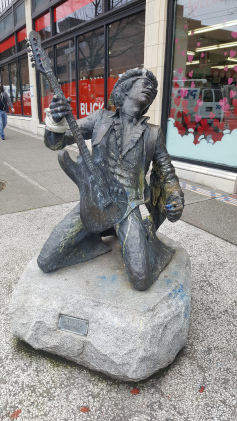
A life-size bronze sculpture of Jimi Hendrix by Daryl Smith, called The Electric Lady Studio Guitar, is installed at the intersection of Broadway and Pine Street in the Capitol Hill neighborhood of Seattle, Washington, in the United States.
46. Connections Musuem
The Connections Museum is located in Centurylink's Duwamish Central Office at East Marginal Way S. and Corson Avenue S. in Seattle's Georgetown neighborhood. It "reveals the history of the telephone and the equipment that makes it all work." The museum was originally sponsored by the Washington Telephone Pioneers, and is now a part of the Telecommunications History Group, based in Denver. It features vintage equipment from AT&T, Western Electric, Pacific Northwest Bell, USWest, and other organizations.
47. Rainier Club
The Rainier Club is a private club in Seattle, Washington; it has been referred to as "Seattle's preeminent private club." Its clubhouse building, completed in 1904, is listed on the National Register of Historic Places. It was founded in 1888 in what was then the Washington Territory. As of 2008, the club has 1,300 members.
48. Floyd and Delores Jones Playhouse
The Playhouse Theatre is a theater located at 4045 University Way NE on The Ave in the University District, Seattle, Washington. It was converted from a tile warehouse in 1930 by Burton and Florence James, who set up the Seattle Repertory Playhouse with multi-ethnic performers and audiences.
49. McCaw Hall
Marion Oliver McCaw Hall is a performing arts hall in Seattle, Washington. Located on the grounds of Seattle Center and owned by the city of Seattle, McCaw Hall's two principal tenants are the Seattle Opera and Pacific Northwest Ballet. The building is named for Marion Oliver McCaw, whose four sons donated $20 million to fund a major renovation in 2003. It was formerly known as the Civic Auditorium and Seattle Opera House.
50. Pilling's Pond - Neighborhood Legacy
Pilling's Pond is a privately owned urban waterfowl reserve and breeding ground in the North Seattle neighborhood of Licton Springs, Seattle, Washington. It was created by lifetime resident Charles A. Pilling and has been a bird breeding site and a roadside attraction since the 1920s.
51. Ward House
The Ward House is a house on Capitol Hill in Seattle, Washington, USA. Having been built in 1882, it is one of the oldest houses in Seattle. Existing houses reportedly built before 1882 in Seattle include the 2629 East Aloha Street (1881), 727 28th Avenue (1870) and Maynard's House located at 3045 64th Avenue Southwest.
52. Blessed Sacrament Church
The Church of the Blessed Sacrament is a Roman Catholic parish within the Archdiocese of Seattle serving Seattle's University District. It is the only parish in the archdiocese to be owned and operated by the Order of Preachers and is within the jurisdiction of the Western Dominican Province. The church's current prior is Fr. Augustine Hilander, and the current pastor is Fr. Dominic David Maichrowicz.
53. The Wall of Death
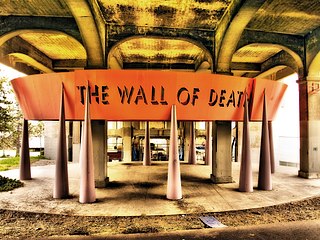
The Wall of Death is a permanently sited public art installation located under the University Bridge in Seattle, alongside the Burke-Gilman Trail and NE 40th Street in the University District. It was designed and built by Mowry Baden and his son, Colin, in 1993.
54. Dr. Jose Rizal Park
Dr. Jose Rizal Park is a 9.6 acre park on the west slope of Beacon Hill in Seattle, Washington. The land, condemned by the city in 1917 for engineering purposes, was acquired by the Parks Department in 1971, and the park was dedicated eight years later. The park is named after José Rizal, the de facto national hero of the Philippines.
55. Alki Point Lighthouse
The Alki Point Light is an active aid to navigation located on Puget Sound's Alki Point, the southern entrance to Seattle's Elliott Bay, King County, Washington. It is listed as Alki Point Light number 16915 in the USCG light lists.
56. University Unitarian Church
University Unitarian Church was designed by Seattle architect Paul Hayden Kirk in 1959. The church is located in the Wedgwood, Seattle neighborhood at the corner of 35th Avenue NE and 68th Street. The building is approximately a mile and half Northeast of the University of Washington Campus and sits across from the Northeast Branch of the Seattle Public Library. It was designed during the time when architect Kirk was working as a sole practitioner.
57. Rachel the Piggy Bank
Rachel, also known as Market Foundation Piggy Bank, Rachael the Pig, Rachel the Pig or Rachel the Piggy Bank, is an outdoor bronze sculpture of a piggy bank, designed by Georgia Gerber and located at Pike Place Market in Seattle, Washington, in the United States. It was dedicated on August 17, 1986, the market's 79th birthday, and is maintained by the Pike Place Market Foundation. Modeled after a pig that lived on Whidbey Island and was the 1985 Island County prize-winner. In 2006 Rachel received roughly $9,000 annually while in 2018, donations increased to $20,000. The money is collected by the Market Foundation to fund the Market's social services.
58. Denny Park
Denny Park is a park located in the South Lake Union neighborhood of Seattle, Washington. It occupies the block bounded by John Street and Denny Way on the north and south and Dexter and 9th Avenues N. on the west and east.
59. Alaska Trade Building
The Alaska Trade Building, also known as the Union Record Building and the Steele Building, is a historic building in Seattle, Washington located on First Avenue near the Pike Place Market. Built in 1909, it was one of the first reinforced steel, concrete and brick buildings in the area and was advertised as being completely fireproof. The building is historically associated with the country's only Union-owned daily newspaper, The Seattle Union Record and is listed on the National Register of Historic Places. The Butterworth Building, another National Register property, neighbors it to the north.
60. Seattle Children's Museum
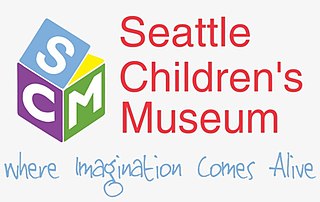
The Seattle Children's Museum in Seattle is located on the lowest floor of the Armory at the Seattle Center. Founded in 1979 with a single exhibit, the museum currently features 18,000 sq feet of play space with 11 exhibits designed for kids 6 months to 8 years. Visitors to the main floor of the Center House can look down into a large open space in the floor which is part of the museum; this was once the site of the bubbleator.
61. 9 Spaces 9 Trees
Nine Spaces Nine Trees is a 1982–1983 art installation by American artist Robert Irwin, located on the University of Washington campus in Seattle, Washington, in the United States. Upon its initial creation, Nine Spaces Nine Trees has a history of occupancy in the Seattle area. It was recreated in 2007. Irwin intended the work to stand for both public and private places and how they coincide.
62. National Building
The National Building is a historic warehouse building in downtown Seattle, Washington, located on the east side of Western Avenue between Spring and Madison Streets in what was historically Seattle's commission district. It is now home to the Seattle Weekly. It is a six-story plus basement brick building that covers the entire half-block. The dark red brick facade is simply decorated with piers capped with small Ionic capitals and a small cornice, which is a reproduction of the original cornice. Kingsley & Anderson of Seattle were the architects.
63. Untitled
Untitled is an outdoor 1975 sculpture by Lee Kelly, installed at Louisa Boren Park in Seattle, Washington, in the United States. The abstract, welded Cor-Ten steel piece measures approximately 19 feet (5.8 m) x 14 feet (4.3 m) x 10 feet (3.0 m).
64. Frink Park
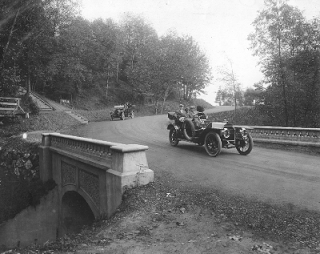
Frink Park is a 17.2 acre park in the Leschi neighborhood of Seattle, Washington. It is a heavily wooded hillside and ravine through which flows Frink Creek. Most of the park is bounded by 31st Avenue S. in the west, 34th Avenue S. in the east, and the rights-of-way of S. Main Street in the north and S. King Street in the south. Lake Washington Boulevard S. and S. Frink Place are recreational drives within the park.
65. Bust of Henry M. Jackson
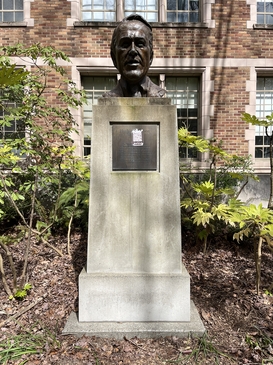
An outdoor bust of Senator Henry M. Jackson by Wendy Ross is installed on the University of Washington campus in Seattle, Washington's University District, in the United States. It is located outside Thomson Hall, home to the Henry M. Jackson School of International Studies, and sits opposite a bust of Norwegian composer Edvard Grieg.
66. South Passage Point Park
South Passage Point Park is a 0.9-acre (0.36 ha) park located in the Eastlake neighborhood of Seattle, Washington, United States. It is directly underneath the Ship Canal Bridge on the south side of the Lake Union/Portage Bay shoreline; North Passage Point Park is directly across the water on the north shore. The park was dedicated in 1977.
67. Sylvan Theater
The Sylvan Grove Theater and Columns, also known as the Sylvan Grove Theater or simply the Sylvan Theater, is a sylvan theater located on the University of Washington campus in Seattle, Washington. Within the theater are four 24 foot (7.3 m) tall Ionic columns from the original University building downtown, constructed in 1861. They are some of the oldest-standing architectural pieces in Seattle. It has been called "one of the most beautiful places on campus."
68. Chapel of Saint Ignatius
The Chapel of St. Ignatius is a Jesuit chapel on the Seattle University campus in the U.S. state of Washington, completed in 1997. The design earned Steven Holl Architects a Twenty-five Year Award from the American Institute of Architects. A scale model of the building is in the permanent collection of the Museum of Modern Art in New York City.
69. Northacres Park
Northacres Park is a 20.7-acre (84,000 m2) public park located in the Haller Lake neighborhood of Seattle, Washington, at the corner of Interstate 5 and N.E. 130th Street. It incorporates a large forested area with trails, a picnic area, a baseball diamond and soccer field, and an off-leash dog area. The park's playground and wading pool were remodeled and reopened in 2012. They include two play areas with equipment for children of different ages as well as a Splash pad.
70. North Passage Point Park
North Passage Point Park is a 0.8-acre (3,200 m2) park located in the Northlake neighborhood of Seattle, Washington, directly underneath the Ship Canal Bridge on the north side of the Lake Union/Portage Bay shoreline. It was dedicated in 1977. South Passage Point Park is directly across the water on the south shore.
71. Donnie Chin International Children’s Park
Donnie Chin International Children's Park, formerly known as the International District Children's Park or International Children's Park, is a 0.2-acre (810 m2) public park for children in the Chinatown–International District (CID) neighborhood of downtown Seattle, Washington, United States. Named after community leader Donnie Chin, the park is at the northeast corner of the intersection of South Lane Street and 7th Avenue South, near the eastern edge of the CID. It was built in 1981, renovated in 2012, and features a bronze dragon play sculpture by Gerard Tsutakawa.
72. Southwest Admiral Way
The Schmitz Park Bridge is a 175 ft (53 m) concrete-box bridge that spans a ravine in Seattle's Schmitz Park. Built in 1936, the structure is both listed in the National Register of Historic Places and is a designated city landmark.
73. Bruce and Brandon Lee Graves
Lake View Cemetery is a private cemetery located in Seattle, Washington, in the Capitol Hill neighborhood, just north of Volunteer Park. Known as "Seattle's Pioneer Cemetery," it is run by an independent, non-profit association. It was founded in 1872 as the Seattle Masonic Cemetery and later renamed for its view of Lake Washington to the east.
74. The Quad
The Liberal Arts Quadrangle, more popularly known as the Quad, is the main quadrangle at the University of Washington in Seattle, Washington. It is often considered the school's trademark attraction. Raitt Hall and Savery Hall frame the northwestern boundary while Gowen, Smith, and Miller Halls frame the southeast. At the top of the quad sits the latest buildings on the quad, the Art and Music Buildings. The quad is lined with thirty Yoshino cherry trees, which blossom between mid-March and early April.
75. Queen Anne Drive
The North Queen Anne Drive Bridge is a deck arch bridge that spans Seattle's Wolf Creek. The 238 ft (73 m) long steel and concrete structure was built in 1936 to replace the previous wood-constructed crossing. It serves as a connection between the Queen Anne neighborhood and the George Washington Memorial Bridge that carries State Route 99. The arch is unusually high and uses a minimal number of supporting members. It was designated a city landmark on December 28, 1981, because of its unique engineering style.
76. Fairview Park
Fairview Park is a 0.8-acre (3,200 m2) park located in Seattle, Washington, on the eastern shoreline of Lake Union along Fairview Avenue E. between E. Hamlin and Allison Streets. It includes a P-Patch and a boat launch.
Share
How likely are you to recommend us?
Disclaimer Please be aware of your surroundings and do not enter private property. We are not liable for any damages that occur during the tours.
